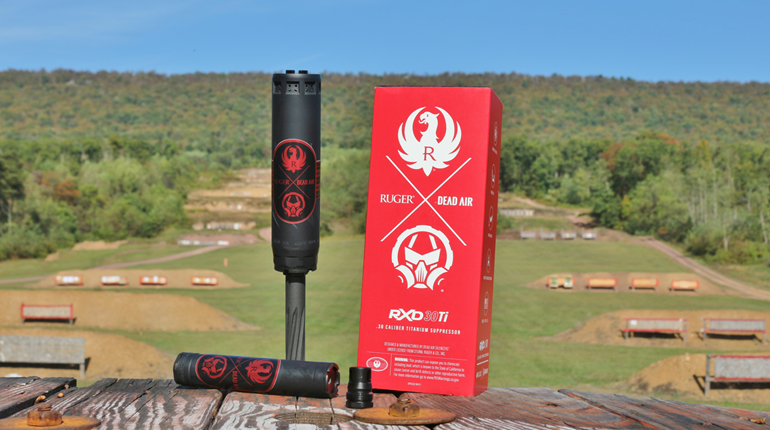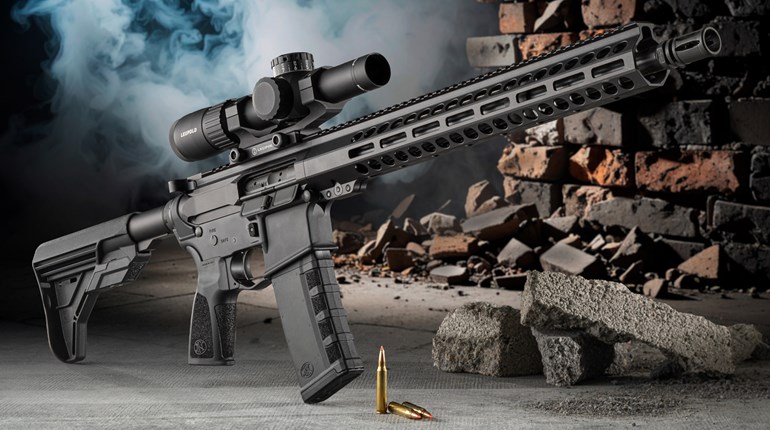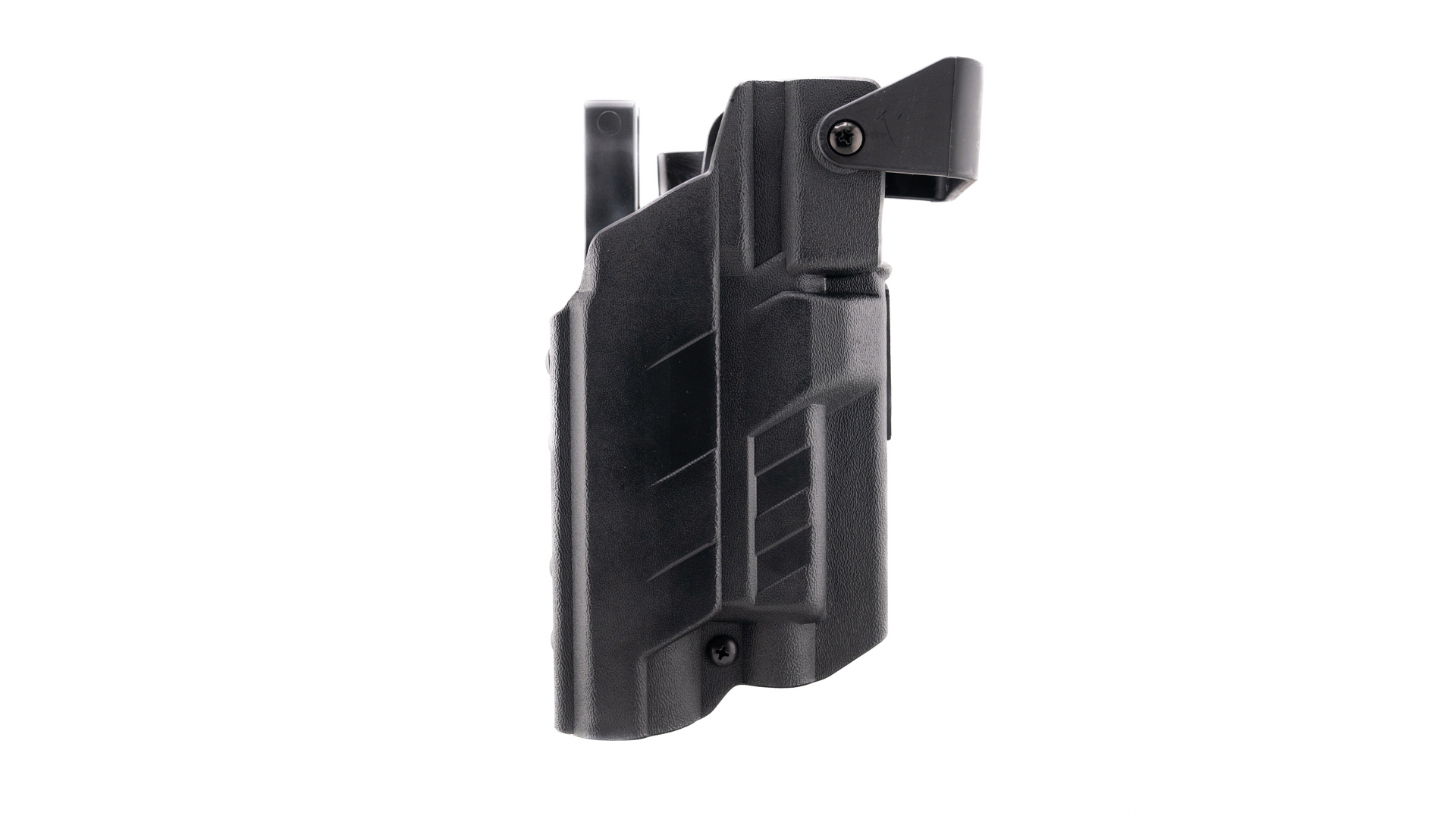
The world of long-range shooting has been getting rocked the past few years. It seems nearly every six months, a new cartridge comes to the market boasting flatter trajectories and increased accuracy and range over its predecessors. 6mm Creedmoor was no different, and like many other cartridges built for extreme accuracy, it hit the bolt gun market in a big way.
About a decade ago its parent cartridge, the 6.5 Creedmoor had a similar introduction, and it took quite a few years for someone to dream up the idea of chambering an AR-10 in it.
Sitting around a shooting bench during a ceasefire, we wondered if anybody had thought of doing the same with its offspring, the 6mm Creedmoor, then of course that conversation jumped right into, “Well, I guess we better find out." Fellow Shooting Illustrated contributor Bryce Towsley gave us some terrific data to work with in his article on the launch of the 6mm Creedmoor (SEE IT HERE), so we decided we would set off to see how hard it would be to build.
The AR-10 doesn’t get enough credit in the precision world. I’ll admit even I was skeptical back in the day. However, times have changed. I have 1/2- and even 1/3-MOA service rifles built on this platform and will not hesitate to take them on a long-range pursuit. Offsetting the marginal accuracy loss is the reduced recoil and ability for rapid follow-up shots. Nothing is faster than just pulling the trigger again, so while the bolt guys are working their action after a miss, the gas gunner will already have a corrected round on its way to target.

Setting off on our mission our first stop was the barrel. As you can imagine, there aren’t many options available. Luckily for us, Wilson Combat had a 22-inch fluted stainless steel offering to which we were more than happy to build our gun around. We went with Wilson for the company's reputation; lord knows there are enough variables when building a gas gun in an obscure caliber, so having this critical part as our rock was guaranteed to ward off a headache.
We attached the barrel to a run-of-the-mill upper receiver and snugged it down. The barrel fit was flawless, and we just needed a hair of fitting to square up the feed ramps, a process which many even believe to be optional. Being that these unique cartridges require just the right amount of gas to cycle, we installed an SLR Rifleworks Sentry 6 Adjustable Gas Block, so we can tweak the gas to get the gun to run right. Topping it off with a Nikon FX1000 6-24x optic, we were ready to move onto the lower receiver.

A good upper needs a good lower, so we used a WMD billet aluminum AR-10 lower and outfitted it with a RISE Armament RA-535 trigger to ensure a crisp, clean break. Capping off our lower, we installed a LUTH-AR MBA-1 adjustable buttstock.
As Towsley alluded to in his article on the 6mm Creedmoor, there isn’t a whole lot of factory ammo floating around in this caliber. Fast-forward almost a year and a half after his writing, and that is still pretty much the case. We were able to gather the same Hornady 108-grain ELD Match round, and now the company's new 103-grain ELD-X Precision Hunter round.

We figured we would run the prescribed five 5-shot groups through the gun after a brief break in and adjustment period and use the better of the two ammo options to base a handload off of. Once our ammo showed up, we set out to do just that. At 200 yards, we sat our test gun into a Champion sandbag set consisting of the company's new Front-V Bag and a Rear Wedge Bag and started breaking in the barrel while we adjusted the gas block. We found a dead-center positon allowed enough gas through without aggressively slamming the bolt rearward. The Wilson Combat Q-Comp mitigated the recoil and all but eliminated the muzzle flash associated with high-velocity rounds.

We concluded our 200 yard testing and found that the 108-grain ELD Match round gave us groups that hovered right outside of MOA. It was VERY consistent with our best target coming in at 2.212 inches and our average only being 2.317 inches. We had a number of blown primers in the 103-grain ELD-X round and ceased testing with it for safety; this is typical when trying to find a new round to work with a new platform.

With our two options now narrowed down to one, we set off on load development with the 108-grain ELD, using H4350 and CCI BR-2 Benchrest primers. We ran the spectrum of published charges in 0.3-grain increments and then 0.1-grain increments to fine-tune the most promising charge to wind up with a final powder charge of 39.4 grains giving us a group that measured just shy of 1 7/8 inches at 200 yards, or .94 MOA, not bad for grabbing basically the first pair of components we got our hands on. Through the process, we reached velocities of 2,905 FPS without warning signs of pressure, so there is quite a bit of promise to this configuration. Loading up another 30 of these, we ran the gun out to 600 yards and had no trouble engaging steel that only 2 MOA.

My takeaway from the experience is simply this: It’s not 1975 anymore. Gas guns are the new normal (Modern Sporting Rifle if you will), and demand for these in any popular cartridge is large enough to at least generate a parts market. Decades of experience with this platform and its evolution to handle the ever more-accurate cartridges have manufacturers of said parts getting it correct right off the bat. If you are in the market for a gun that can accurately hit multiple targets at distance, think outside the box and don’t be afraid to challenge old ideas.






































